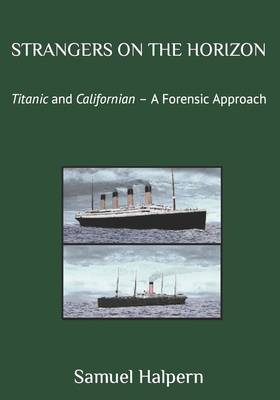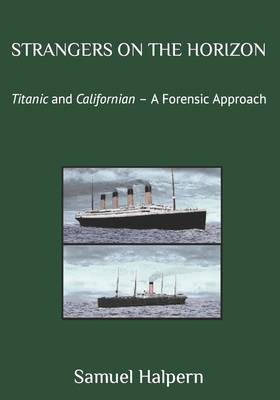
- Retrait gratuit dans votre magasin Club
- 7.000.000 titres dans notre catalogue
- Payer en toute sécurité
- Toujours un magasin près de chez vous
- Retrait gratuit dans votre magasin Club
- 7.000.000 titres dans notre catalogue
- Payer en toute sécurité
- Toujours un magasin près de chez vous
Strangers on the Horizon
Titanic and Californian - A Forensic Approach
Samuel Halpern
Livre broché | Anglais
30,95 €
+ 61 points
Description
On April 22, 1912, during the third day of the US Senate investigation into the loss of Titanic, it was learned that there had been a steamer in sight of Titanic. This steamer had failed to respond to distress rockets that were being sent aloft from the stricken Titanic as she slowly sank beneath the surface of the Atlantic following a collision with an iceberg. The following day, on April 23, 1912, a story was printed in a small New England newspaper that claimed that a small tramp steamer, the SS Californian, had seen the lights and rockets of Titanic, and had refused to come to her aid.This book takes a new look into what has since been called the Californian affair. It is significantly different from previous treatments of this highly contentious subject in that it does not try to simply interpret or reinterpret every single word that eyewitnesses said in 1912. Instead, it takes a novel approach of applying specific analytical techniques to test the many conflicting and contradictory statements that were made in 1912 in order to find the reality of what took place. It includes detailed analysis of distances, bearings, headings, speeds, drift rates, ranges of visibility and other quantifiable information that has never before been examined in any great detail. It provides answers to the question of where was Californian relative to Titanic that night, and were they in sight of each other. This book also looks into the role played by several other vessels that were in the area that memorable night, delving into some of the claims made afterward concerning rescue attempts and movements. In addition, the book also explores the moments leading up to, and immediately following, Titanic's collision with an iceberg, piecing together a detailed moment-by-moment picture of the events and actions that took place from the time the fatal iceberg was first spotted, to the time that the iceberg was last seen fading astern into the dark of night.
Spécifications
Parties prenantes
- Auteur(s) :
- Editeur:
Contenu
- Nombre de pages :
- 558
- Langue:
- Anglais
Caractéristiques
- EAN:
- 9781702121989
- Date de parution :
- 11-11-19
- Format:
- Livre broché
- Format numérique:
- Trade paperback (VS)
- Dimensions :
- 178 mm x 254 mm
- Poids :
- 957 g







